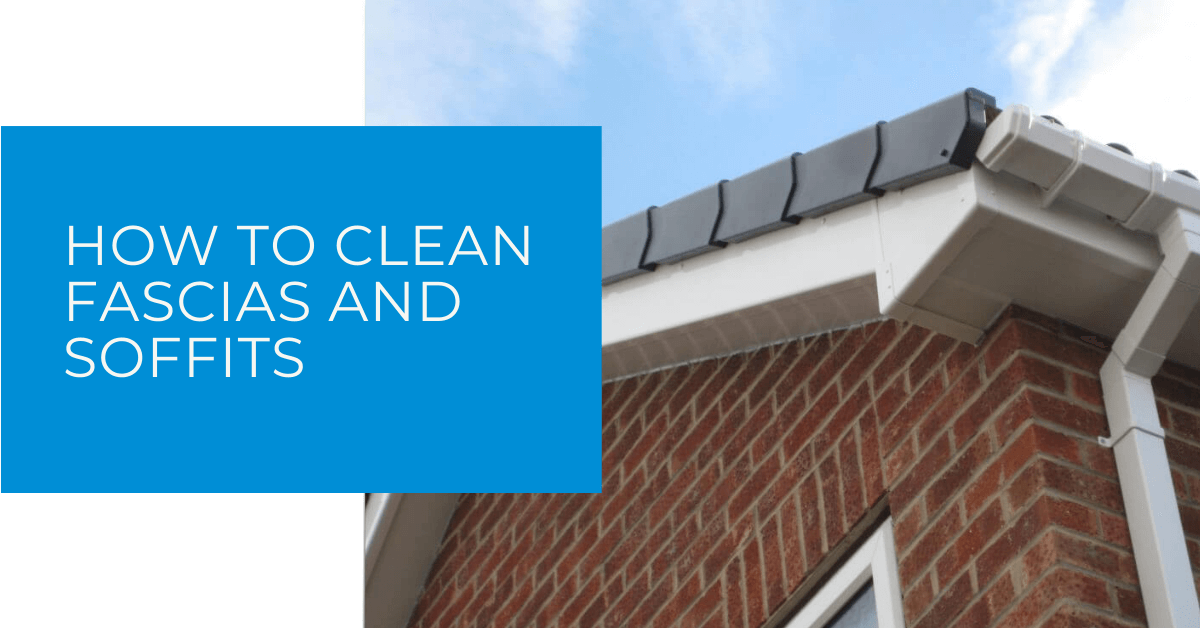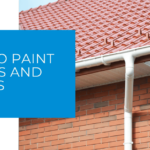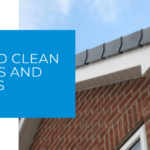This article is for all of you who are looking to clean your Fascias and Soffits. Cleaning the fascia boards on a house can be tricky, but it’s not impossible! This article will provide you with tips on how to identify mould growth, what tools you’ll need for this job, and step-by-step instructions on how to take care of it.
Contents
What Tools Are Needed to Clean Fascias and Soffits?
- Pressure washer (optional)
- A ladder or step stool
- Sponge or soft cloths
- Paintbrush (a new one, not the old brush you used on your fence)
- Trisodium phosphate (TSP) substitute, TSP oil, vinegar, and water mix. Mix with a ratio of three parts water to one part TSP substitute/oil mixture.
How to Clean Soffits and Fascias with a Pressure Washer?
If the soffits are in good condition, you can use a pressure washer to clean them. Be sure not to get any of this mixture on your plants or grass because it will kill them! If there is mold, make sure you wear protective gear and keep children away from where you’re working.
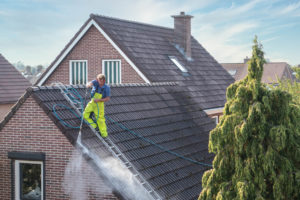 You may find mould growing behind your fascia boards if water pools up against the wall of your home when it rains or snows. You’ll want to remove all that crud using a paint scraper with a long handle—you don’t want this nasty stuff going into your lungs while trying to scrape it off walls! Using an old toothbrush works well for small areas too. Make sure everything dries completely before painting
You may find mould growing behind your fascia boards if water pools up against the wall of your home when it rains or snows. You’ll want to remove all that crud using a paint scraper with a long handle—you don’t want this nasty stuff going into your lungs while trying to scrape it off walls! Using an old toothbrush works well for small areas too. Make sure everything dries completely before painting
Step 1
Make sure you are wearing protective gloves and clothes that cover your arms, legs, and feet. You may also want to wear a respirator because the mould is likely toxic. If there’s no wind blowing, set up fans around the area so mold spores don’t spread everywhere when they blow off during cleaning.
Step 2
Start washing at ground level with the low-pressure setting on your machine. Make circular motions as you move upwards towards to top of each section of boards/fascia board.
Step 3
Be careful not to damage paint or wood surfaces by applying too much pressure while using a high-pressure nozzle tip.
Step 4
Let everything dry for several hours after rinsing it clean! The longer you wait, the less chance there will be for bacteria growth.
How to Clean Fascias and Soffits Without a Power Washer
Step 1
Wear goggles to protect your eyes from dust. You may also want to wear a mask for this part of the process.
Step 2
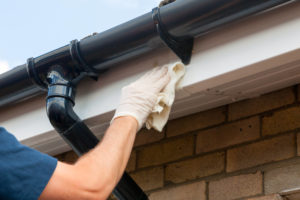 Climb up on the roof, and remove any leaves or other debris that is cluttering this area of your house’s exterior. If you are unsure which areas are open beneath these boards, do not attempt to clear them yourself. Call a professional fascia and soffit contractor if you are unsure! This will help when it comes time to scrub the boards.
Climb up on the roof, and remove any leaves or other debris that is cluttering this area of your house’s exterior. If you are unsure which areas are open beneath these boards, do not attempt to clear them yourself. Call a professional fascia and soffit contractor if you are unsure! This will help when it comes time to scrub the boards.
Step 3
Once all debris has been removed, use the TSP mixture in small sections of your house’s exterior surface area (do not apply this mixture directly onto siding or paint). Apply solution with sponge/cloth, allow to sit for a moment. Then scrub the area you are working with using your paintbrush (or another stiff brush). Rinse clean and dry off.
Step 4
If this is an area that needs repainting or even laying new siding down where there was none before, be sure to take care of these larger projects immediately after cleaning the Fascias and Soffits. This will help to prevent any kind of water damage or growth in the future.
FAQs about Cleaning Fascias and Soffits
I have cedar siding, will the TSP mixture damage it?
No! The only time you would need to worry about this is if there are any bare spots or cracks in your wood that may allow chemicals into them. If this is the case, simply use a plastic paintbrush instead of a wooden one when applying the solution.
Is oven cleaner okay for cleaning fascias and soffits?
Yes, but make sure to follow instructions carefully. Can vinegar be used as an alternative? Vinegar can be effective at removing mould from exterior surfaces, however, it’s not considered safe for all types of building materials – always check with the manufacturer before using anything on painted surfaces/siding.
What is the best cleaner to use on fascias and soffits?
Vinegar is a good alternative for removing mould from exterior surfaces. Any other cleaners such as oven cleaner or bleach should not be used on wooden boards, fascia, or soffit materials. These chemicals will damage them over time.
Is dish soap okay for cleaning fascias and soffits?
Dish soap can cause paint to bubble if applied directly, never apply this solution directly onto siding/painted areas of your house’s exterior – always test in an inconspicuous area first before using it elsewhere!
Can ammonia be used as an alternative?
Yes, Ammonia solutions are also effective at removing mould from exterior surfaces, however are not considered safe for porous materials such as wood.
Is bleach okay for cleaning fascias and soffits?
Yes, but be sure to follow the manufacturer’s instructions carefully! Never apply directly onto the siding or painted areas of your house’s exterior – always test in an inconspicuous area first before using it elsewhere!
Conclusion
Cleaning your house’s exterior can be a daunting task, but it is important to do! Not only does it make your home look nicer, but it also prevents mould and other water damage from happening in the future.

